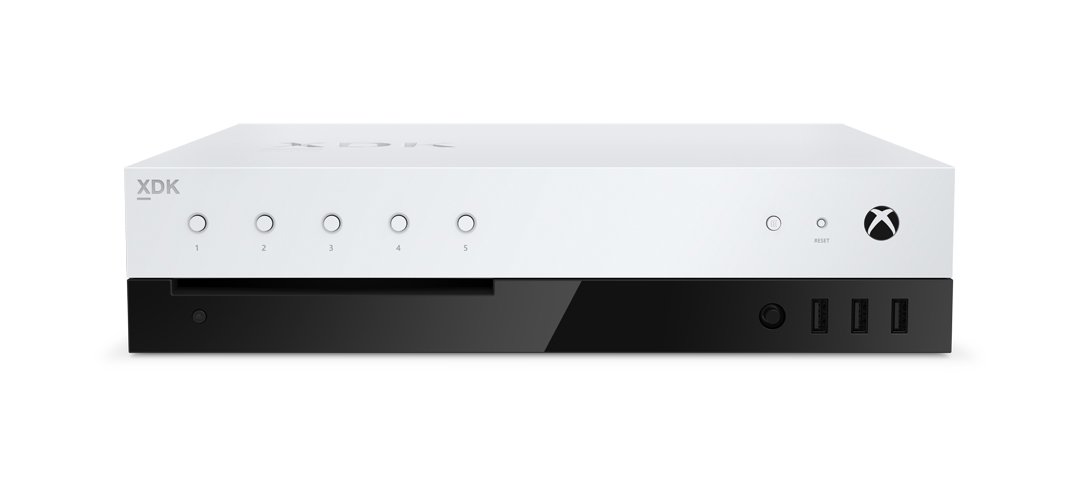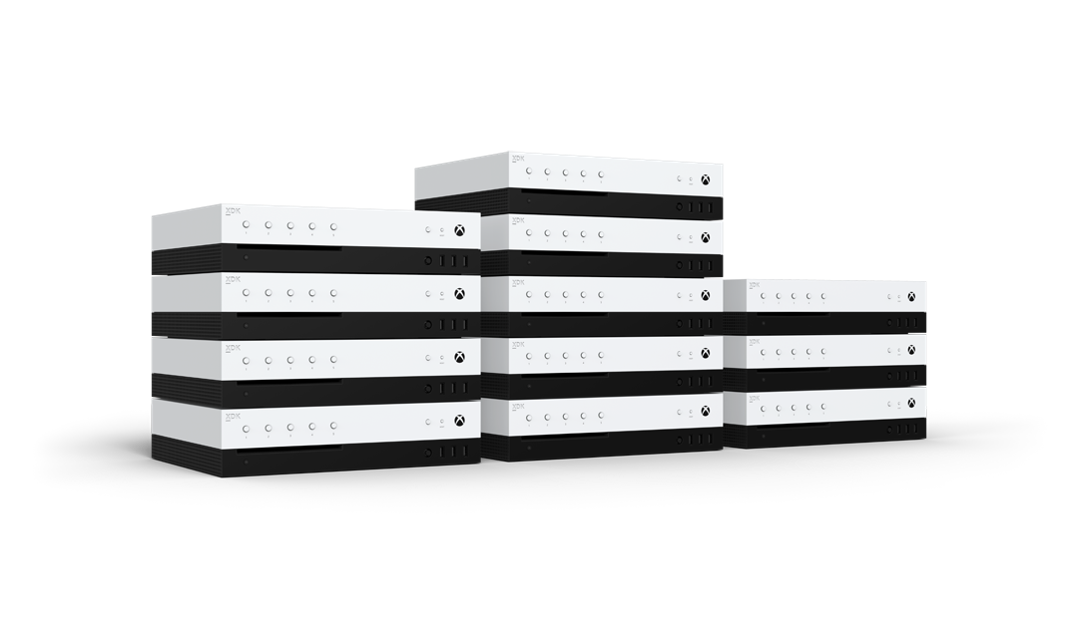Why the Project Scorpio Xbox XDK has an OLED front panel (video)
The "Project Scorpio" Xbox's developer kit (XDK) was outed a few weeks ago, but we have a few juicy details to add.

Project Scorpio's dev kit comes with beefed up specs to help developers produce games across Xbox One, Scorpio, and Windows 10 PCs. Change-resilient games will scale in resolution across 900p to 1080p on Xbox One, all the way up to native 4K on Scorpio and capable Windows PCs. Developed for UWP utilizing compatible middleware, such as Microsoft's Havok physics engine, developers will be able to target all three platforms with a single codebase.
Project Scorpio's XDK comes with an array of hardware features to help streamline game testing and deployment on Microsoft's platform. In addition to a second Ethernet port for debugging, extra RAM, and additional GPU compute units, Scorpio has a unique OLED display panel and programmable buttons. Here's a closer look at Scorpio's LCD front panel, to give you a better idea of what developers will be able to do.
Project Scorpio's XDK front panel is a 256 x 64 OLED screen, complete with a directional nub, which is also programmable. The five LED buttons are also completely customizable, and Microsoft recently demonstrated some of the things developers can do with the front panel's drivers.
Scorpio dev kit, kinda sexy no? #ProjectScorpio pic.twitter.com/o1FLT6Siv8— Jez (not a mimic) (@JezCorden) 3 May 2017
The entire point of the LCD front panel is to move debug information and console commands from the game itself to a dedicated space. Developers will have full access to use the display and buttons as they see fit, whether it's for offloading benchmark information from rendering on-screen, to console commands to spawn mobs, skipping levels, or changing graphics settings on the fly. Debug commands are easy to access on a PC using a keyboard, but on a console's gamepad developers have limited space for additional commands, which is why Microsoft stepped in with these new features.
Scorpio XDK front panel does way more than just FPS count. Fully programmable. Watch dolphins on the back screen, etc. Really cool stuff. pic.twitter.com/AaV63fq9qrScorpio XDK front panel does way more than just FPS count. Fully programmable. Watch dolphins on the back screen, etc. Really cool stuff. pic.twitter.com/AaV63fq9qr— Jez (not a mimic) (@JezCorden) 13 May 201713 May 2017
In the demonstration above, Microsoft showed some simple commands it set up using the front panel API, to control a simulation of swimming dolphins. The different buttons have been programmed to add additional dolphins to the scene, remove them, display 3D wireframes, and pause or unpause the simulation.
How long will it take until DOOM gets ported to the Project Scorpio XDK display?
The OLED screen can also output full video, which might seem odd, but according to Microsoft some developers said that when they have multiple kits running simulations in a lab scenario, they want the ability to see what each console is doing without having to connect a monitor. The OLED panel solves that issue.
Microsoft has sample code in its dev center to help game creators get to grips with the API, and it seems likely that different engines will implement their own functionalities. Microsoft is offering developers the opportunity to port their existing diagnostic display widgets to Scorpio's hardware buttons and screen, offloading the controls from the Xbox gamepad and the visual information from the GPU.
Get the Windows Central Newsletter
All the latest news, reviews, and guides for Windows and Xbox diehards.

Microsoft is expected to unveil the retail version of Project Scorpio at E3 2017 in June, and we'll be there in force to bring you all the latest and greatest.
For now, I'm just wondering how long it will take for DOOM to get ported to the Project Scorpio XDK display. Don't disappoint us, devs.

Jez Corden is the Executive Editor at Windows Central, focusing primarily on all things Xbox and gaming. Jez is known for breaking exclusive news and analysis as relates to the Microsoft ecosystem while being powered by tea. Follow on Twitter (X) and Threads, and listen to his XB2 Podcast, all about, you guessed it, Xbox!
